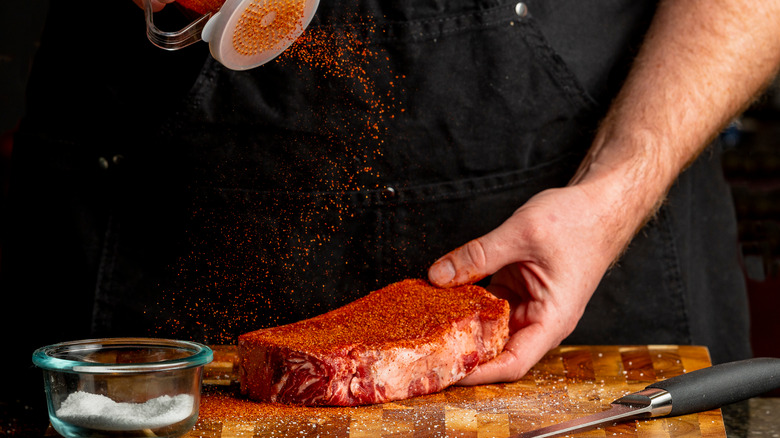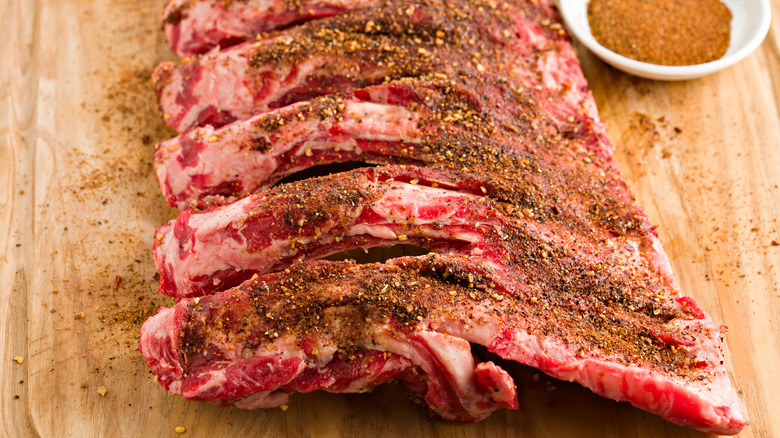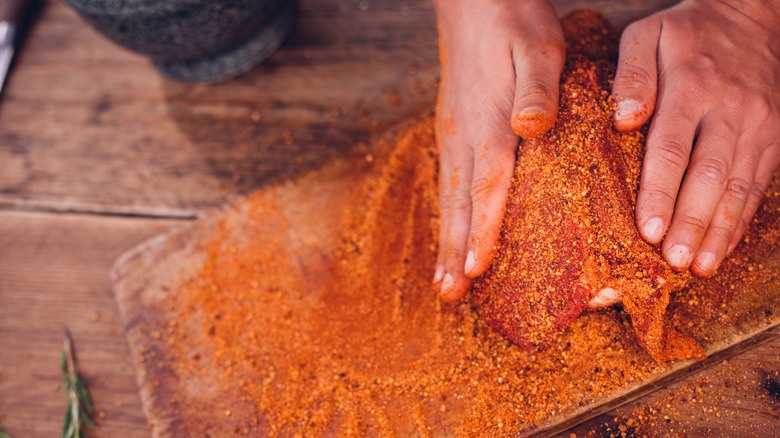The Mistake That's All Too Easy To Make With A Dry Rub
Great barbecue can seem deceivingly simple as compared to dishes that have a reputation for complexity. French coq au vin or an Italian osso bucco, for example, have a perceived elevated status from appearing on fancy fine dining menus. But the truth is, great barbecue is the result of so many important details and decisions, including time and temperature, method and sauce, cuts of meat, and style of preparation.
And for those serious about seasoning, there may be no more important element than a dry rub. This blend of spices is not only a major flavor booster, but it's functional, too, with sugars that promote caramelization and coarse spices that form a crisp and satisfying crust. Given the importance of dry rub, it'd be a shame to misfire when lighting up the smoker (or oven, or slow cooker), be it pork, steak, chicken, or even a rubbed and ready veggie. One major mistake when preparing your dish is to skimp on that seasoning blend — not being generous enough with your dry rub means missing out on the most delicious results.
How much rub is just right?
It's tricky to know exactly how much is enough dry rub, and you may want to experiment a bit with amounts and levels, particularly for different dishes. But a good rule of thumb is to apply about a tablespoon per pound before cooking. It's also good practice you give your meat a good patdown with a paper towel first, as moisture can prevent all that precious rub from adhering. From there, massaging the blend into your meat will help ensure an even distribution, which in turn will be critical in creating that perfect crust.
Another strategy is to slather a bit of mustard or hot sauce, which results in more of a wet rub and adds an element of flavor. Although there are distinct differences between wet and dry-rubbed meats, the latter are also often still subject to the sauce treatment upon serving, so you have opportunities to layer in more depth later.
The right types of rub
Some dry rubs are designed specifically for a particular protein. You can opt for a super sweet rub for ribs with brown sugar, cinnamon, orange peel, and savory spices. A zesty BBQ rub with lime and black pepper might be perfect for your chicken drumsticks, while a coriander-spiked blend hailing from St. Petersburg in Florida might be best for your steak.
The beauty of a dry rub is in part its customizability. You can certainly choose one from your grocer's shelf, but you can also get super creative in concocting your own, landing on a signature custom blend made to reflect the cook. Just keep in mind when nailing down your ideal combination that it helps to weigh each ingredient as you go and take notes, so you can recreate it again later. And while you may find some blends to be interchangeable, just as delicious on fish and chicken as pulled pork or porterhouse, you can be sure that an abundant amount of your favorite dry rub will always deliver satisfaction.


